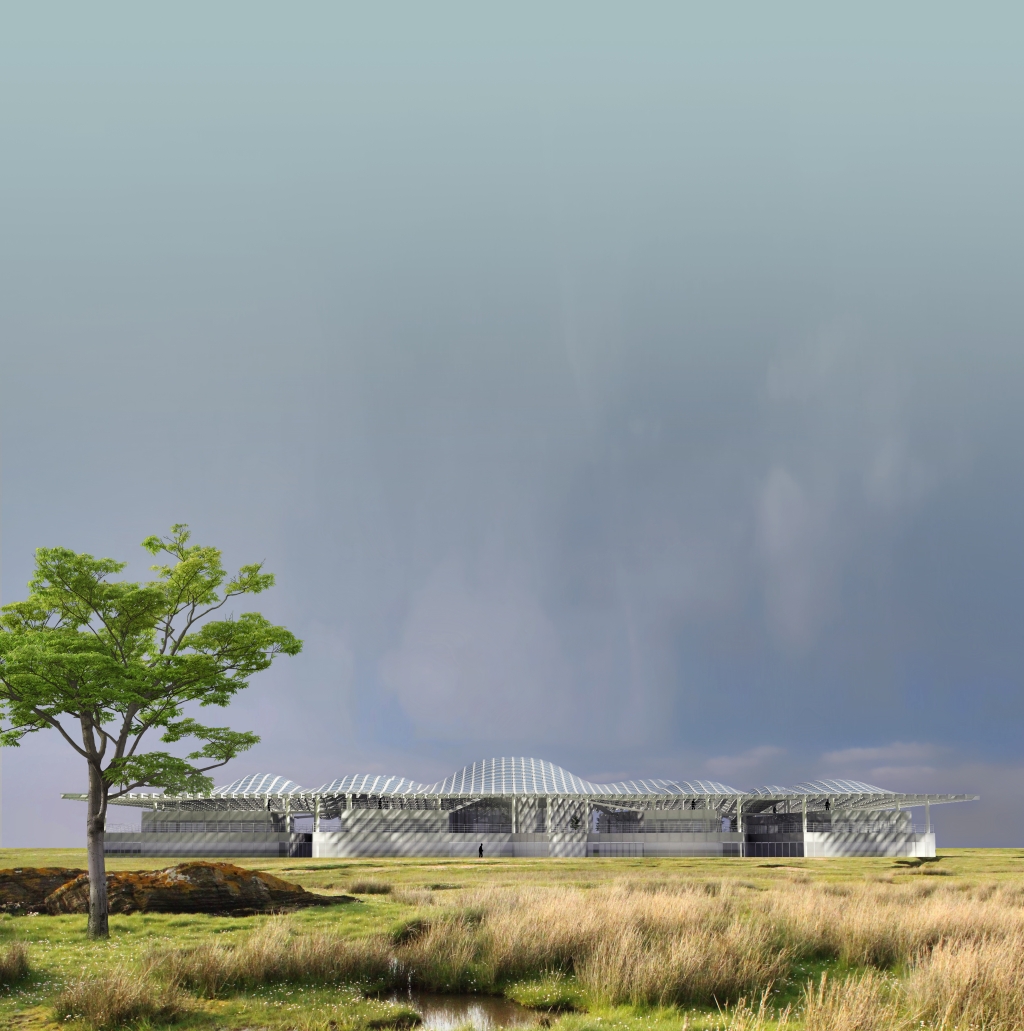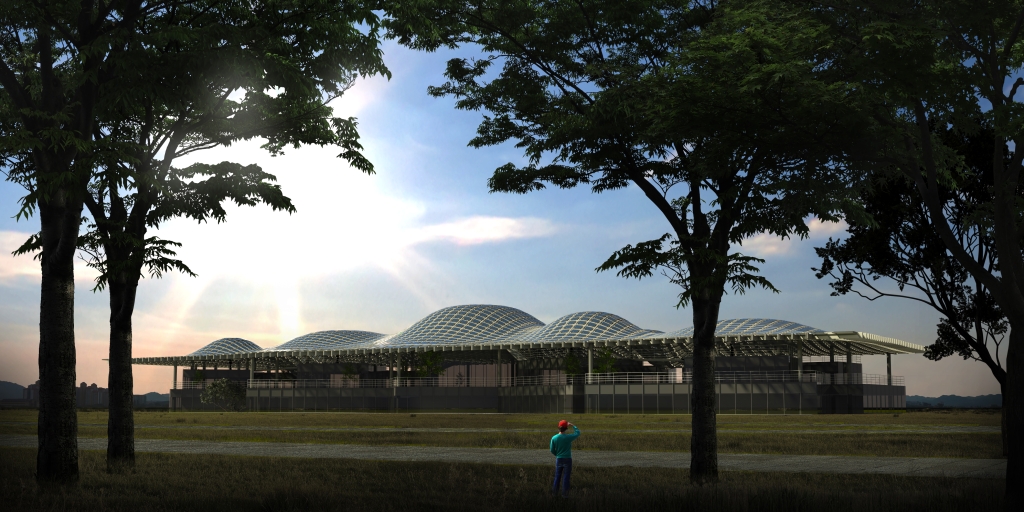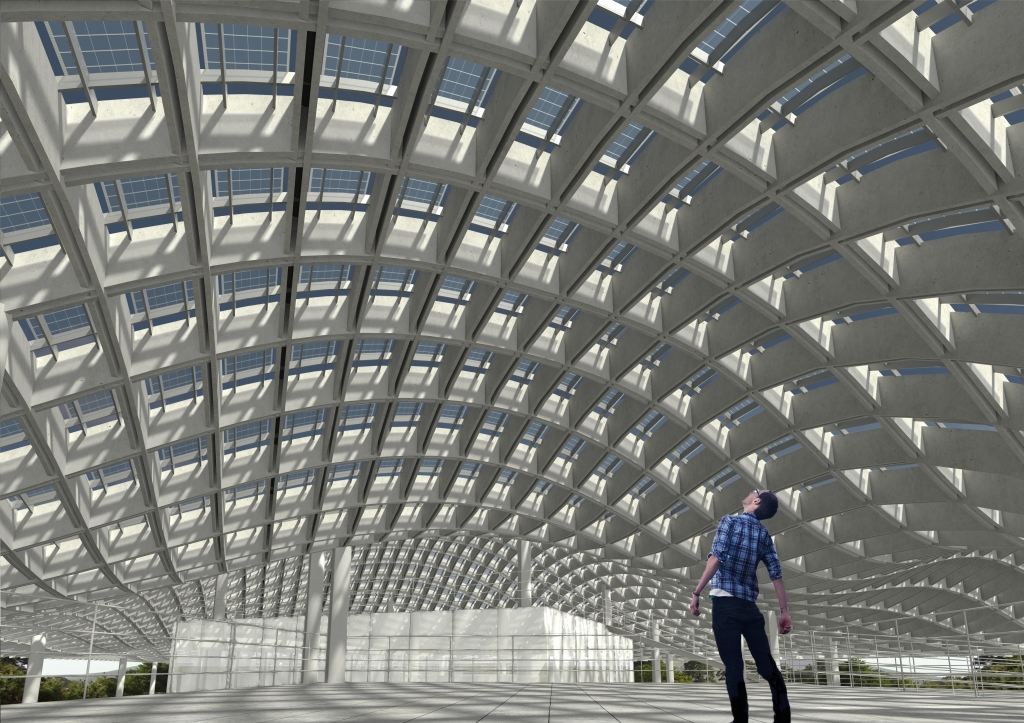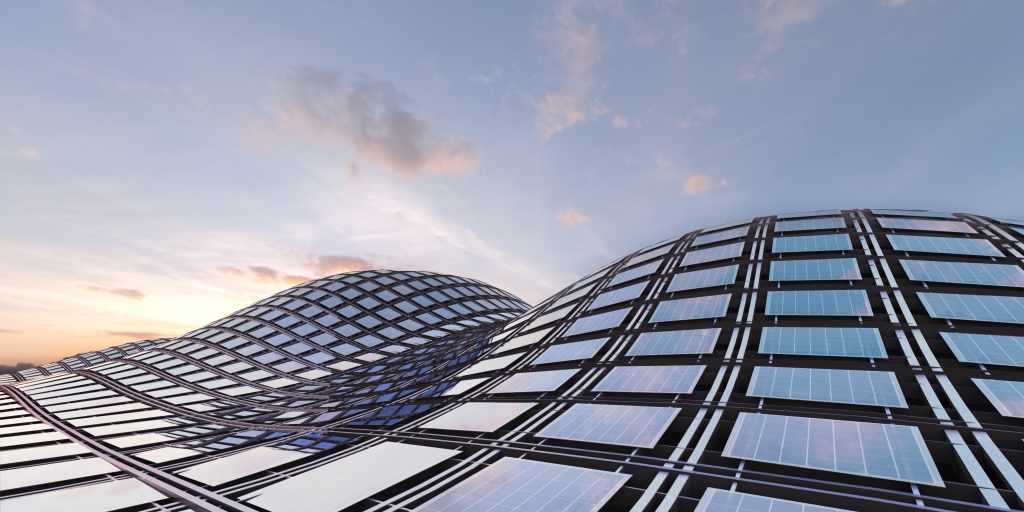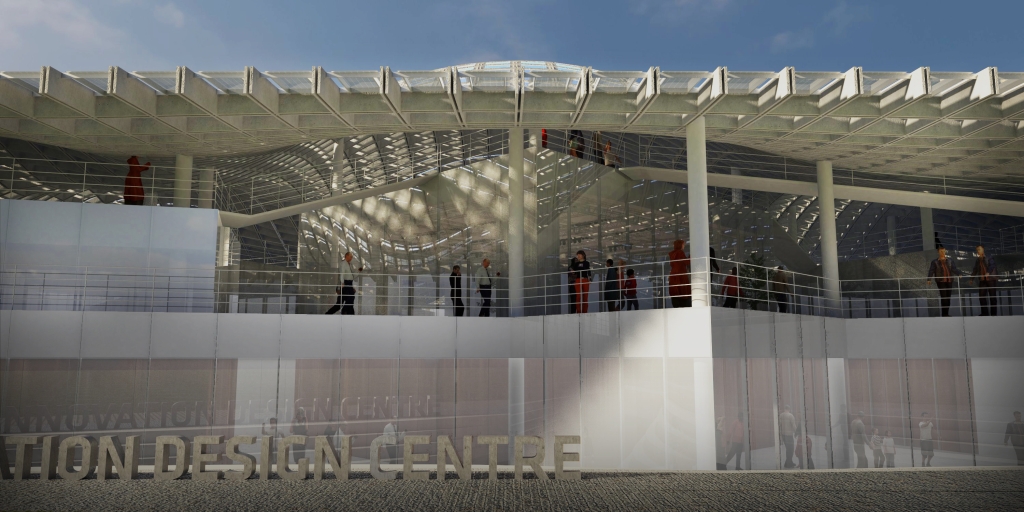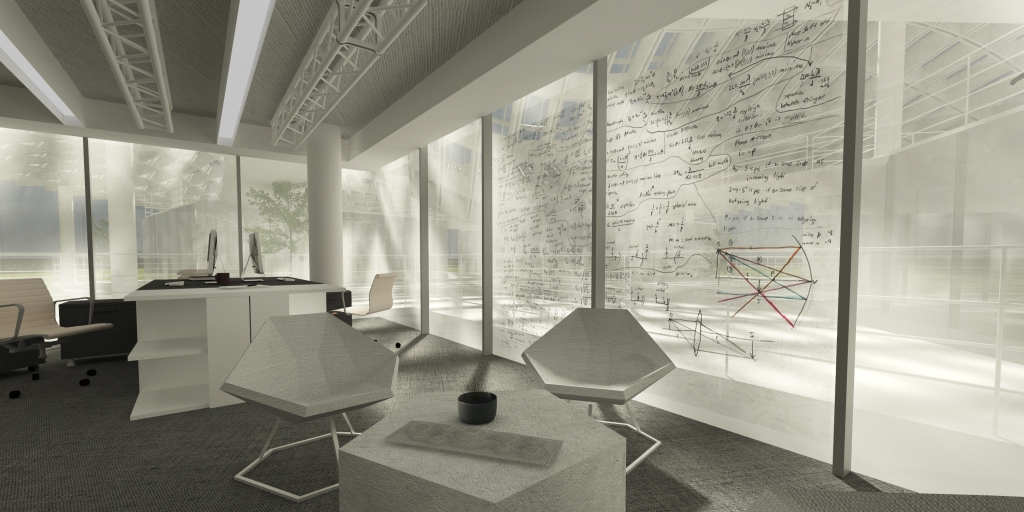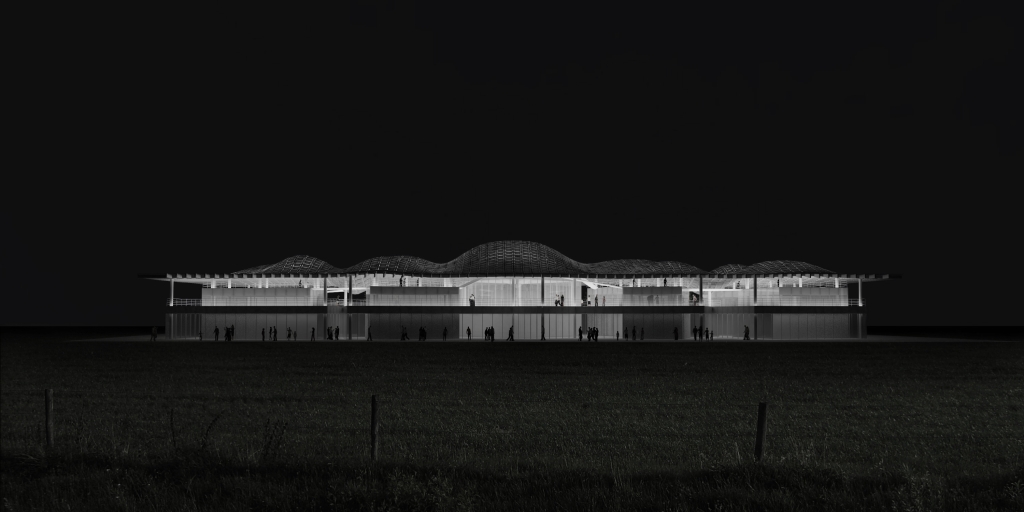Green Research Innovation Center
Green Research Innovation Center
The proposed research facility incorporates a high-performance façade and shading strategies in order to achieve passive design and low energy principles. Solar control maximizes daylight, minimizes heat loss and infiltration, while also optimizing the use of natural ventilation wherever possible. The mixed mode approach will reduce the overall energy consumption of the develop¬ment by taking advantage of abundant solar source as well as constant prevailing wind throughout the year. Centralized cooling will be supplemented to all indoor areas during extreme heat days.
Energy cogeneration strategies will harness excess heat from indoor computers, equipment, human activity, and other thermal generators to drive steam generators to achieve higher net energy production. This greatly minimizes the energy imported from the Utility provider. All main spaces will be naturally ventilated with treated fresh air supplies from the MEP plants in the basement. These spaces will also be equipped with operable windows that are linked to a smart-office system that automatically switches chilled air supply off for that space. Electrical power is supplied by the Utility provider to an incomer substation at basement level and distributed to individual research villages, each with its own safety electrical features. The basement electrical plant will be equipped with generator batteries that absorb the peaks and troughs of naturally harnessed renewable energy via wind and sun. These batteries can also provide life safety services, in the event of mains failure. A dedicated standby generator for a basement flood pumping system will also be provided. Intelligent controls optimize plant performance and monitor energy consumption. Fire protection services include a sprinkler system throughout the super-roof and building, pressurization of protected shafts to prevent smoke ingress in the event of a fire and an automatic fire detection and alarm system which is linked to the fire protection systems via the disaster management control system.
3200 m2 of photovoltaic solar panels will provide a large proportion of the building’s energy consumption. As a building that specializes in green energy research, the roof details are equipped with easily detachable modules to swap for improved systems in the future. The Super-roof grid also provides a rig for testing new solar products or research prototypes. All modules are linked to a smart-grid system that regulates optimum sun angles, and feed real-time data to the research lab’s mainframe computer system.
Other aspects of the design which support the LEED platinum target include an integrated solution to transport for the development which will utilized the high quality ICT network within the building to facilitate the best use of public transport, rain/grey water harvesting, strategically located air intakes to ensure good air quality and dedicated waste streams to facilitate recycling. Access and accommodation for plant and services distribution will allow for a safe and easy installation, commissioning and maintenance regime for the building which in turn will maximize plant performance and reduce energy costs.
-
Client
National University of Malaysia (UKM) and Malaysia Green Building Confederation
-
Location:
Bangi, Kuala Lumpur, Malaysia
-
Year:
2016
-
Size:
26,352 m2
-
Collaborator:
Kumpulan Senireka
-
Status:
First Prize, In Progress
Share project

